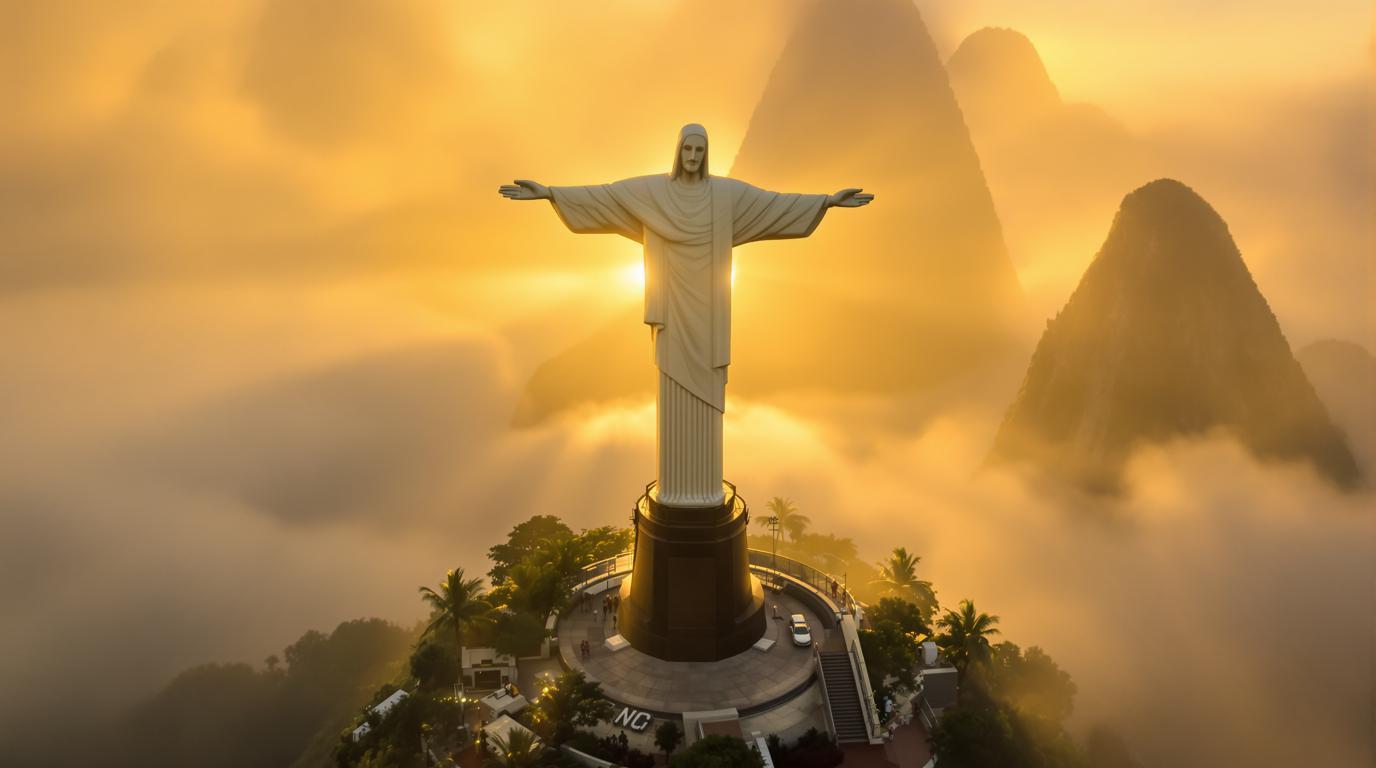Standing with arms outstretched as if embracing the entire city below, Christ the Redeemer isn’t just Rio de Janeiro’s most iconic landmark – it’s a masterpiece of human determination perched 2,300 feet above a metropolis of contradictions. This 98-foot Art Deco colossus, completed in 1931 after nine years of painstaking work, has witnessed nearly a century of Brazil’s evolution while maintaining its silent vigil over the “Marvelous City.”
The golden hour phenomenon few tourists experience
While thousands of visitors crowd the observation platform daily, only the earliest risers witness the statue’s most magical moment. Arrive at the first tram departure at 7:20 AM to catch the sunrise casting an ethereal glow across the soapstone tiles. As one local guide told me, “In those quiet morning moments, with the city still waking below, you can almost feel the statue breathing.”
A secret chapel hides beneath those massive feet
Few visitors realize that inside the base of this towering monument lies a small chapel dedicated to Our Lady of Aparecida, Brazil’s patron saint. After climbing 220 steps (or taking the elevator), you can enter this intimate sanctuary where locals still come to pray, creating a stark contrast to the tourist bustle outside.
The surprising reason it stands where it does
Corcovado Mountain wasn’t the first choice for the statue’s location. City planners initially considered Sugar Loaf Mountain, but engineers determined the narrow peak couldn’t support the structure’s massive weight. The switch to Corcovado proved fortuitous – its broader summit not only accommodated the statue but provided the panoramic backdrop that makes it so photogenic.
Lightning strikes the statue approximately 6 times yearly
The statue’s exposed position makes it a lightning magnet during Rio’s summer thunderstorms. In 2014, a particularly powerful strike damaged the statue’s right thumb, requiring extensive repairs. Local engineer Carlos Fernandes explains: “We’ve reinforced the lightning rod system multiple times, but Mother Nature always finds a way to remind us of her power.”
The tram journey rivals the destination
While most visitors focus solely on reaching the statue, the 20-minute cogwheel train ride through Tijuca National Forest deserves equal attention. This dense Atlantic rainforest is home to howler monkeys, toucans, and over 30 waterfalls. Keep your camera ready – the biodiversity here rivals the Galapagos in terms of unique species and evolutionary significance.
The best view isn’t where you think
Skip the overcrowded main platform and head to the less-visited left side (facing the statue). This vantage point offers unobstructed views of Sugarloaf Mountain, Copacabana, and Ipanema in a single sweeping panorama. The drama of this vista rivals even Victoria Falls’ edge-of-the-abyss vistas for sheer breathtaking impact.
The curse of the fallen scaffolding
Local legend tells of three workers who died during construction when scaffolding collapsed. Since then, some cariocas (Rio natives) believe the statue carries both blessing and burden – protecting the city while occasionally demanding sacrifice through landslides on Corcovado’s slopes. Dramatic? Perhaps, but such stories reflect how deeply the monument has penetrated Rio’s cultural consciousness.
“The Christ doesn’t just watch over Rio – he is Rio. When you stand beneath those outstretched arms, you understand our city’s soul: open, embracing, magnificent yet wounded.” – Paulo Coelho, Brazilian novelist
The astonishing engineering behind those arms
The statue’s seemingly impossible 92-foot arm span presented enormous structural challenges. Engineers cleverly incorporated a hidden internal framework of reinforced concrete similar to what ancient Egyptians used in their massive temple columns, allowing the hollow structure to withstand hurricane-force winds despite its exposed position.
As dusk falls and the statue’s illumination gradually intensifies against the darkening sky, visitors often fall silent – much like they do in Europe’s ancient fortress cities when centuries of history suddenly become tangible. In those moments, even the most jaded travelers understand why this sentinel of soapstone and concrete has transcended its religious origins to become a universal symbol of humanity. Christ the Redeemer doesn’t just represent Rio – it embodies our timeless desire to reach beyond our limitations toward something greater than ourselves.
